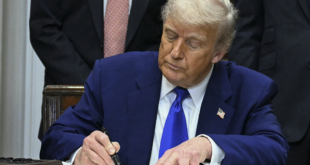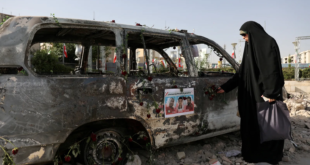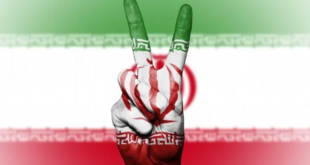 VIENNA (Reuters) – Iran has refused to let U.N. inspectors set up cameras at an underground plant where it is set to begin installing 3,000 centrifuges for full-scale enrichment of nuclear fuel, diplomats said on Friday.
VIENNA (Reuters) – Iran has refused to let U.N. inspectors set up cameras at an underground plant where it is set to begin installing 3,000 centrifuges for full-scale enrichment of nuclear fuel, diplomats said on Friday.
Tehran is expected to announce the major escalation in its uranium enrichment drive during Islamic Revolution anniversary celebrations running until February 11, jacking up tensions with Western powers which pushed through U.N. sanctions against it.
Iran’s reported refusal to allow the watchdog International Atomic Energy Agency (IAEA) to hook up cameras in the subterranean centrifuge hall at Natanz is not illegal as long as nuclear activity has not yet begun.
But Tehran’s move, following a ban on 38 of 200 inspectors designated to work in Iran, would up the ante in a showdown with Western powers and underline resentment over their bid to halt a nuclear programme Iranian officials insist is entirely peaceful.
The West suspects Iran, which hid enrichment research from the IAEA for 18 years, is striving to build atomic bombs behind the facade of a civilian energy programme. IAEA probes have found no proof of bombmaking, but raised many questions.
Vienna-based diplomats familiar with IAEA operations said Iran blocked inspectors earlier this week from installing surveillance cameras in the Natanz underground complex.
“The cameras need to be (functional) before nuclear material is introduced into the centrifuges for enrichment,” said one diplomat, who like others asked for anonymity to discuss confidential information.
Talks had begun to resolve the dispute, the diplomat said.
“There is still time to resolve the problem before any real centrifuge operations start,” said another Vienna diplomat.
“Iran is not breaking its (non-proliferation) Safeguards Agreement with the IAEA here because nuclear activity has not begun in the plant,” a third diplomat told Reuters.
RISING TENSIONS
“But their behaviour reflects the rising tensions. They have no incentive to be transparent since they feel the U.N. (sanctions) resolution is illegal, and they seem to want to approve these cameras as part of a negotiated settlement.”
There was no immediate comment from Iran or IAEA officials.
The U.N. Security Council, which banned transfers of nuclear materials and knowhow to Iran on December 23, has give Tehran until February 21 to stop enriching uranium or face broader sanctions.
IAEA inspectors and cameras continue to monitor a small research-level plant of 350 centrifuges in the above-ground wing of Natanz, in the desert 200 km (125 miles) south of Tehran.
Uranium gas processed from ore is fed into centrifuges that spin at supersonic speed to boost the material’s fissile element for nuclear fuel. Enriched to 5 percent, uranium can run power plants. Enriched to 80 percent or more, it can detonate bombs.
Iran says it intends to enrich uranium only to the low level required for electricity. But IAEA personnel and cameras would have to be inside the underground complex to verify this.
The 3,000 centrifuges, if run nonstop for long periods in interlinked cascades that conduct the fuel production cycle, could yield enough fuel for one atom bomb within a year. The 3,000 are envisaged as the first stage of a planned 54,000.
But analysts say Iran has yet to prove it can smoothly operate two cascades of 164 centrifuges each in Natanz’s pilot wing, let along the many more cascades it would need to run in tandem underground to enrich more than token amounts of uranium.
Still, the United States and Israel have voiced concern that 3,000 centrifuges will bring Iran to the nuclear “point of no return”, and have prompted talk about pre-emptive military strikes on Tehran if sanctions do not halt its activity.
 Eurasia Press & News
Eurasia Press & News


